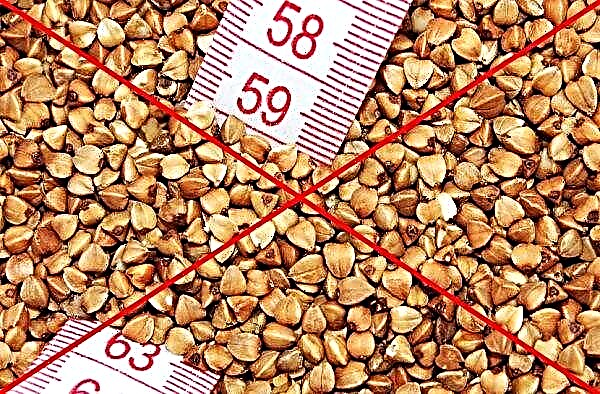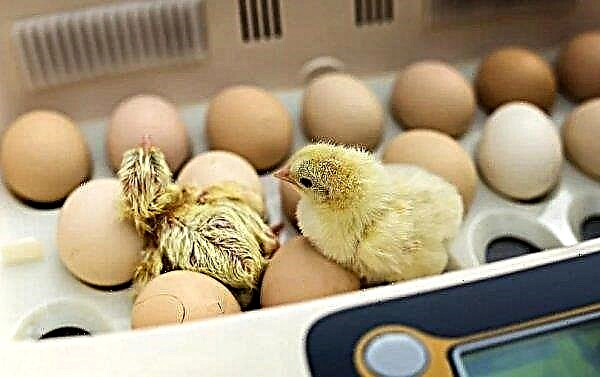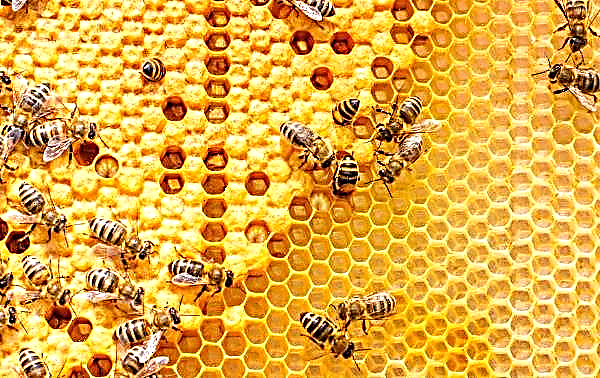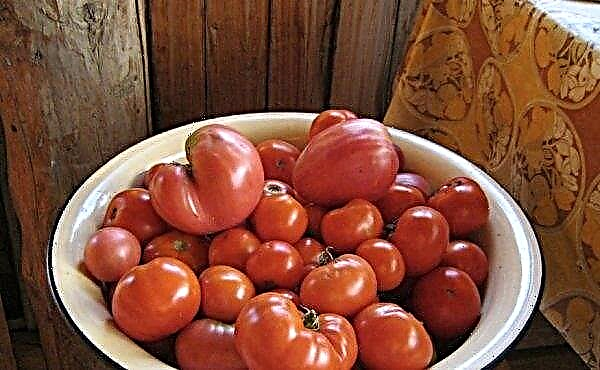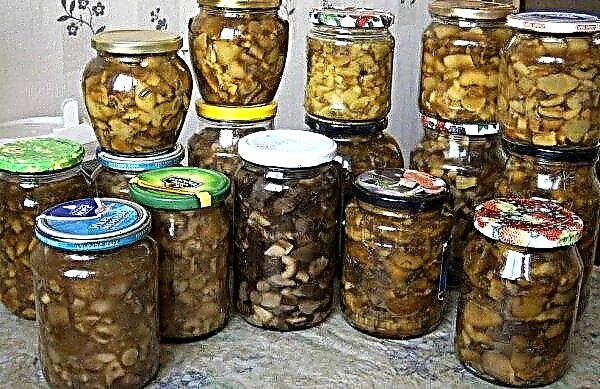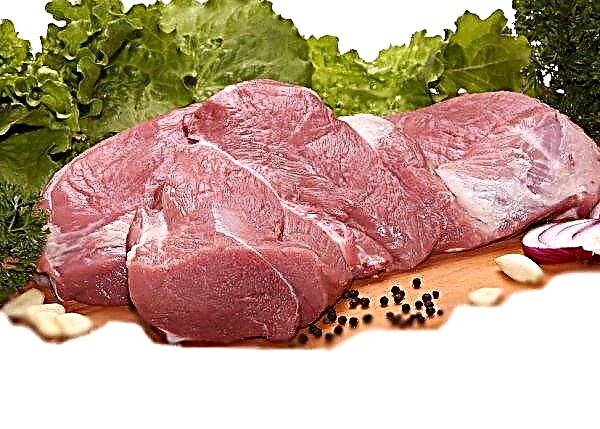Heating for beehives during the cold season is very important for maintaining normal life and offspring of a bee colony. Why do we need heating, its types and home-made design, read the article.
Why is heating used?
In severe winter, beekeepers use additional heating of premises for bees, such procedures are required to exclude the death of the colony from hypothermia.
Warming can be:
- external - additional covering of the room outside;
- internal - installation of a heater.
Important! Modern heating technologies are capable of not only warming the temperature in spring in the free part of the hive from +30°C to +35°C during brood, but also create optimal conditions for air humidity not higher than 80%.
An infrared heater with a built-in thermostat allows you to save the entire bee colony, and also contributes to a quick brood and minimizes the birth of insects with underdeveloped limbs.
When and how is it used?
The principle of operation of the infrared heater is that the radiation penetrates the hive, directly affecting the bee family. Heating also acts on the surface of the hive, which will prevent its decay and eliminate excess moisture.
Air heating inside the hives begins in the spring when the families are ready for brood; in different areas, the timing of the start of additional heating is different. For beekeepers, the starting point for heating is the beginning of the cleansing overflow by bees and air temperature.

From November, when the first frosts begin, and until March, to warm the hives, it is enough to use natural heating, installed under the bottom. The temperature under the frame should be 0 ° C, which will be sufficient for the normal existence of bees. This temperature is achieved using a heater power of 12 watts. With the advent of the spring thaw, starting in March, the temperature under the frame is increased to + 7 ° C, but they closely monitor the condition inside the hive, where the temperature should not exceed + 35 ° C.
An apiary does not need heating at an air temperature of + 20 ° C, because this temperature allows insects to independently maintain the required temperature inside the hive.Important! When warming up, it is necessary to avoid a strong temperature increase in the notch zone, because insects fly outwards, focusing on the heat indicators in this zone of the hive, and flying out into the street in cold weather can die.
Types of heating
Using heating for beehives is simple and reliable, you only need to decide on the choice of equipment. There are several types of heaters that differ in the functions and materials of the assembly.
Types of heating:
- electric type;
- "The device of Progalsky."
Electric type
To heat an apiary with electricity is one of the easiest and most common ways among apiaries. An electric heating plate provides the ability to minimally interfere with insect life.

The film heater, presented in the form of a thin, behind a sealed plate, inside which there is a heating element. This type of heating plate, outwardly resembles the kind of gusli, among beekeepers fell in love with ease of use and cost-effectiveness.
Heating is used:
- as a warm dividing part;
- as a pallet heater, in the spring brood;
- for heating layers in the mother liquor.
General characteristics of the most commonly used device:
- dimensions - 15.4 × 21.6 × 0.03 cm;
- power - 12 W;
- voltage consumption - 12 V.
Did you know? During severe winter frosts, to prevent the uterus from freezing, bees swarm above it to warm and maintain a temperature of + 28 ° С.
"The device of Progalsky"
The Progalsky Instrument is a heater for beehives, a domestic producer, which is a small aerothermostat operating from a shielded heat cable capable of controlling heat transfer and humidity in several beehives at once.
Inventor Fyodor Mikhailovich Progalsky, has a higher technical education at the Polytechnic Institute of Novgorod, has worked in the design bureau for more than 20 years. The development of the heating device was a success thanks to many years of design experience and continuous operation.  The development of the aerothermostat made by Fyodor Mikhailovich Progalsky was presented in 2005, the principle of which is to conduct heated air through the foam duct. The heating element is a flexible electric drive with high resistance.
The development of the aerothermostat made by Fyodor Mikhailovich Progalsky was presented in 2005, the principle of which is to conduct heated air through the foam duct. The heating element is a flexible electric drive with high resistance.
How to provide a beehive with electric heating yourself?
To regulate the heat transfer regime in the hive, it is not necessary to buy electric heaters, they can be constructed independently.
Frame heater
Check out

Materials for the manufacture of a frame heater:
- bar 40 × 2 cm - 2 pcs.;
- bar 30 × 2 cm - 2 pcs.;
- 50 mm nail - 8 pcs.;
- nichrome wire with a diameter of 0.4 mm - 3.81 m;
- a wire with a diameter of 0.4 mm, the length should reach 2 m;
- insulation tape.
Production Instruction:
- To make the frame, it is necessary to connect the 40 × 2 cm bars with a 30 × 2 cm beam using 8 nails of 50 mm, for this the boards are laid out at a 90 ° angle in the form of a frame and 2 nails are driven in from each corner, connecting the bars.
- From the sides where the length is 30 cm, it is necessary to make small notches, which will be located at a distance of 1 cm from each other.
- 3.81 m long nichrome wire is tightly wound around the frame and fastened in place of the notches. Winding nichrome is carried out so that the beginning and end of the wire come out from one corner, leave a gap of about 2-3 cm.
- A 2 m wire must be fastened with a wire by twisting and subsequent insulating with an insulating tape, then connected to a transformer.
The frame is attached to the bottom of the hive, and the wires are led out through the notch or the roof, depending on the principle of the location of the main transformer.
Video: beehive frame heater
Plate heater
Materials for the manufacture of plate heating:
- slate 2.1 × 11 × 0.5 cm;
- iron plates, for coating 2.1 × 11 × 0.1 cm - 2 pcs.;
- nichrome wire 0.6 mm - 6 m;
- 50 mm bolt - 4 pcs.;
- wire 0.6 mm - 2 m.
Assembly assembly instruction:
- The slate plate must be punched to a depth of 0.5 cm, in increments of 0.5 cm from the long sides.
- The nichrome wire is wound on a plate, passing through each hole in the opposite side, the procedure is performed so as to obtain a dense winding with a wire.
- The ends of the wire should come out of one corner, they must be connected to the wire by twisting and tightly insulated.
- Cover the resulting winding with iron plates on both sides and fasten with 4 corners with bolts.
- Wire, connect to the transformer.

The heater is installed under the frame space, and the wire is led out through the cover of the hive.
Useful Tips
To insulate hives for the winter, adhere to the following rules:
- The hive in the apiary must be placed close to each other, it is easier to connect an electric heating, and additional protection from the wind is created.
- The houses for bees are placed on concrete, and they also try to strengthen not only the bottom with electric heating, but also insulate the walls with foam.
- When warming up bee houses, it is necessary to clearly control the ventilation and humidity level, which is why a summer house is equipped in the lower and lateral parts of the hive. Lower let, provide a valve to avoid draft.
In winter and spring, bees are in dire need of additional heating of the hives, which helps maintain optimal temperature conditions inside the house, and also helps to increase the population due to the birth of healthy queens. An uninterrupted heat supply will be ensured by the installation of an electric heater, which due to its multifunctionality will ensure the correct heat transfer and humidity inside the hive.


